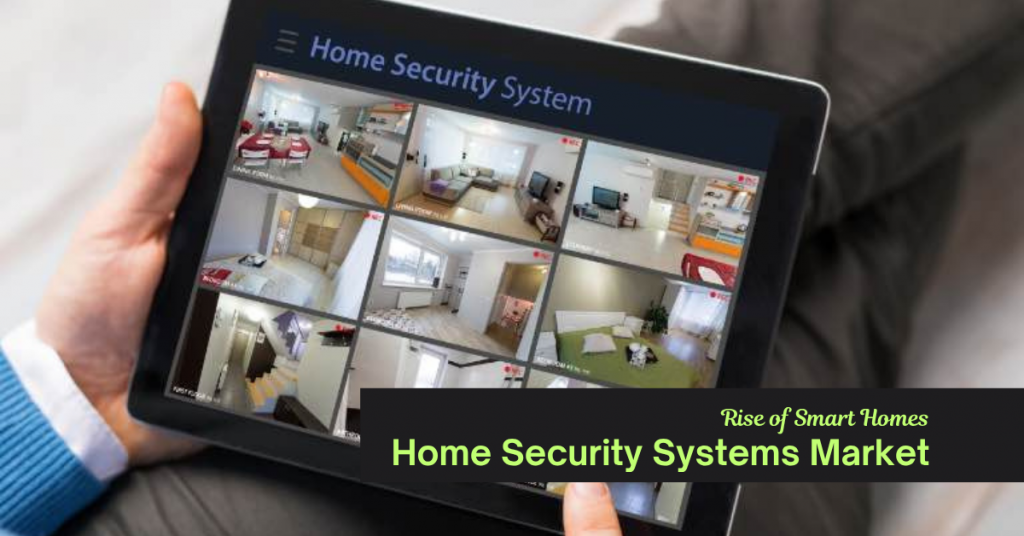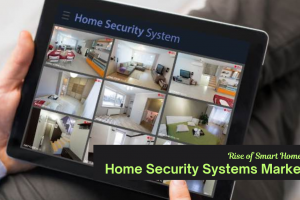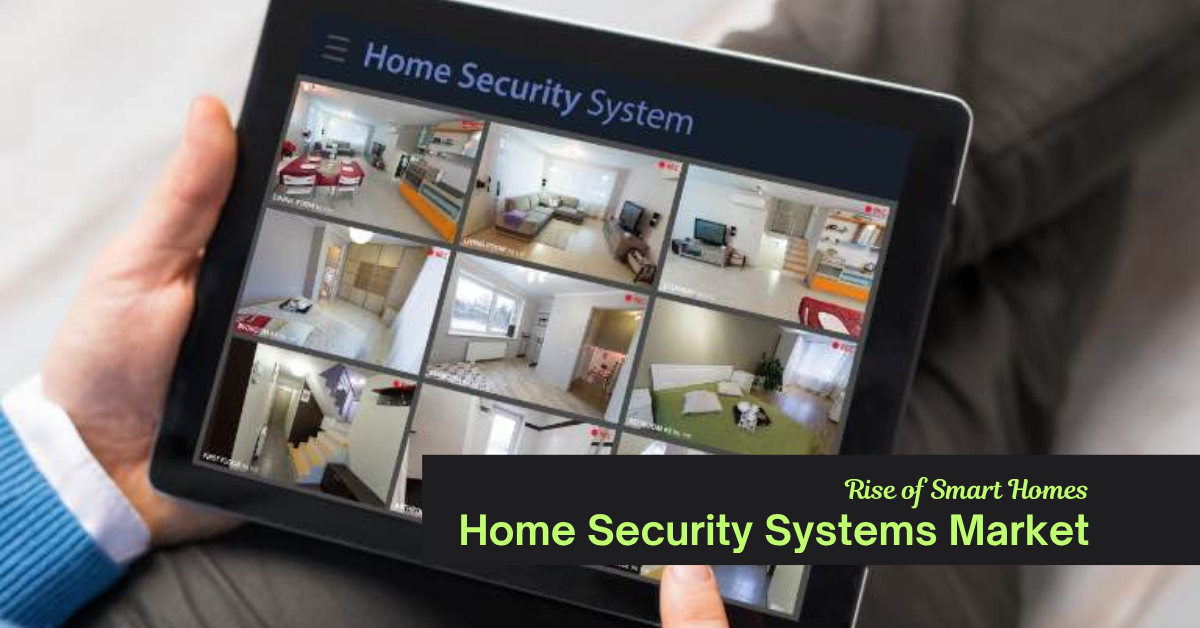
Market Overview
The Home Security Systems Market was valued at USD 47,800.00 million in 2018, reaching USD 61,419.13 million in 2024. It is projected to hit USD 116,833.79 million by 2032, expanding at a CAGR of 8.42% from 2024 to 2032. This rapid growth reflects the rising concerns over residential security and increasing adoption of smart technologies globally.
The importance of home security systems has become more prominent due to the increasing rate of urbanization, higher disposable income, and the proliferation of connected home devices. With evolving security threats and the need for remote monitoring, consumers are embracing technologies that offer both safety and convenience. From smart video surveillance to AI-powered alarms, the landscape has transformed significantly over the years.
Globally, this market holds significant relevance in today’s digital ecosystem. With the rising integration of IoT and AI in home security products, end users are increasingly choosing advanced systems that combine automation and analytics. Insurance companies are also offering incentives for homes equipped with smart security systems, further boosting market traction. As a result, the Home Security Systems Market has evolved into a dynamic sector shaping the modern home safety experience.
Read full report: https://www.credenceresearch.com/report/home-security-systems-market
Market Drivers
Increasing Urban Crime and Burglary Rates
Rising cases of theft, break-ins, and home invasions in metropolitan areas have intensified the demand for smart and responsive security systems. As cities expand and population densities increase, residents are opting for comprehensive home protection solutions. Enhanced surveillance is now seen as an essential preventive measure. Urban police departments are also recommending home security installations, particularly in high-risk neighborhoods. With law enforcement response times under scrutiny, homeowners are investing in systems that offer immediate alerts and deterrent features. Additionally, media coverage of crimes has amplified public awareness and demand for home safety. These factors collectively contribute to the rising importance of secure residential infrastructure.
Surge in Smart Home Adoption
The growth in connected homes and the smart home industry has led to higher integration of intelligent security devices. Voice assistants, mobile connectivity, and cloud-based analytics have transformed traditional systems into automated security hubs. Consumers prefer centralized systems that allow them to monitor, control, and customize security from their smartphones. Integration with home automation platforms further enhances convenience and responsiveness. With tech giants expanding their smart home ecosystems, compatibility between devices and systems has improved significantly. The appeal of controlling door locks, cameras, and alarms with a single app is driving wider adoption. This trend is pushing vendors to innovate continuously.
Technological Advancements in Security Devices
New innovations such as facial recognition, biometric access, motion detection, and AI-enabled surveillance are attracting both homeowners and security providers. These advancements make systems more proactive and user-friendly, increasing adoption rates. The incorporation of edge computing is enabling real-time threat detection at the device level. Enhanced video analytics can differentiate between human movement and irrelevant motion, reducing false alarms. Smart doorbells with HD video and cloud storage have become more affordable and accessible. Interoperability with emergency services is being embedded into newer systems for faster incident response. These improvements are turning security systems into intelligent, adaptive tools for modern living.
Growing Affordability and DIY Systems
The availability of cost-effective DIY security kits and flexible monitoring services has opened access to a wider consumer base. Consumers who earlier refrained due to installation costs now find budget-friendly options, boosting overall market penetration. Subscription-based services allow users to opt for only the features they need. Easy setup and app-guided installation appeal to tech-savvy millennials and renters. The proliferation of e-commerce platforms has made it easier for consumers to explore and purchase these solutions. Promotions and bundling options by telecom and insurance companies are also fueling adoption. The shift toward subscription models instead of high upfront costs is driving long-term market engagement.
Market Challenges
High Initial Investment for Advanced Systems
Despite long-term savings, the upfront cost of high-end security solutions deters many potential users. This acts as a barrier, especially in price-sensitive regions. Premium features such as biometric access, AI surveillance, and 24/7 monitoring services can escalate overall expenses. Customers in rural or low-income areas may find such systems unaffordable without subsidies or payment plans. Moreover, professional installation fees add to the cost burden. Although DIY systems provide relief, they may lack the robustness or feature set of professionally installed ones. Overcoming this price gap remains a challenge for full-scale adoption.
Privacy and Data Security Concerns
Smart home systems are vulnerable to hacking and data leaks, raising privacy concerns among users. Ensuring robust cybersecurity is a major challenge for manufacturers and service providers. Breaches in home camera systems or cloud storage have raised alarms in recent years. Consumers are cautious about who has access to their live feeds and stored footage. Compliance with data protection regulations like GDPR becomes critical for market credibility. Security providers need to prioritize encryption, secure APIs, and real-time threat response to build trust. Failure to do so could result in reputational damage and customer churn.
Lack of Awareness in Emerging Regions
In developing countries, awareness and understanding of modern security systems remain limited. The absence of educational campaigns and localized strategies affects market penetration. Many homeowners are unfamiliar with the benefits and usability of smart home security. Traditional lock-and-key mechanisms are still perceived as sufficient by a large segment of the population. Retailers and service providers often lack outreach programs in semi-urban or rural zones. Without localized marketing and demonstrations, adoption is unlikely to rise significantly. Bridging this awareness gap is essential for expanding into emerging markets.
Fragmented Market with Intense Competition
The presence of numerous local and international players results in price wars, inconsistent quality, and diluted brand loyalty. This fragmentation challenges the growth of standardized global solutions. Companies often focus on short-term pricing strategies to capture market share, impacting product innovation and service consistency. Lack of industry-wide interoperability standards leads to compatibility issues among devices. Consumers find it difficult to select the right system amidst overwhelming choices. Furthermore, smaller players may lack the technical support and reliability offered by established brands. Consolidation and collaboration may help address these inefficiencies in the future.
Market Opportunity
Expansion in Emerging Markets
Countries in Asia Pacific, Latin America, and Africa present untapped potential. Rising urbanization and improved digital infrastructure offer expansion opportunities for vendors. Governments are investing in smart city projects, indirectly supporting home security ecosystems. Increased smartphone and internet penetration in these regions is making smart home technologies more feasible. Security concerns in newly urbanized areas are prompting residents to seek protection solutions. Market players entering with cost-effective, localized products stand to gain significant traction.
Integration with Renewable Energy
Solar-powered surveillance systems and energy-efficient monitoring devices are gaining traction, especially in off-grid or remote areas. These systems reduce dependency on traditional power sources and enable continuous operation during outages. Solar compatibility also appeals to eco-conscious consumers. Energy-saving algorithms and devices are becoming part of product design strategies. With increasing focus on sustainability, such innovations can serve as unique selling points for vendors. Incentives for green technologies further support this trend.
Insurance Industry Collaboration
Home insurance providers are partnering with security firms to offer bundled packages. Such partnerships incentivize customers and open new revenue channels. Discounted premiums for homes with certified security systems are becoming common. Insurance tech is integrating risk mitigation tools directly with home monitoring solutions. This creates a win-win scenario—reduced claims for insurers and enhanced safety for homeowners. Strategic alliances between security and insurance industries can drive mutual growth.
AI and Machine Learning Integration
Predictive security using AI-driven analytics enables preemptive threat detection. Companies investing in machine learning algorithms are shaping the next wave of intelligent security solutions. These technologies can detect anomalies based on user behavior, time of day, or location data. Over time, systems learn and optimize response actions, offering more personalized protection. AI also improves system maintenance by predicting hardware failures. Future systems may even communicate with each other to detect community-wide risks.
Market Segmentation
By Home Type
- Independent Homes
- Condominiums/Apartments
By Security
- Professional-installed and Monitored
- Self-installed and Professionally Monitored
- Do-It-Yourself (DIY)
By Systems
- Fire Protection System
- Video Surveillance System
- Access Control System
- Entrance Control System
- Intruder Alarm System
By Services
- Security System Integration Services
- Remote Monitoring Services
- Fire Protection Services
- Video Surveillance Services
- Access Control Services
By Geography
North America
- U.S.
- Canada
- Mexico
Europe
- UK
- France
- Germany
- Italy
- Spain
- Russia
- Belgium
- Netherlands
- Austria
- Sweden
- Poland
- Denmark
- Switzerland
- Rest of Europe
Asia Pacific
- China
- Japan
- South Korea
- India
- Thailand
- Indonesia
- Vietnam
- Malaysia
- Philippines
- Taiwan
- Rest of Asia Pacific
Latin America
- Brazil
- Argentina
- Peru
- Chile
- Colombia
- Rest of Latin America
Middle East & Africa
- GCC Countries
- South Africa
- Rest of the Middle East and Africa
Regional Analysis
North America remains the leading region, driven by the widespread adoption of smart homes, high per capita income, and awareness. The U.S. is the dominant market owing to early technology adoption and presence of major players. Canada is following closely with strong investment in residential IoT. Demand for professionally monitored systems is high across this region. Strong regulations and insurance incentives further encourage adoption. Integration with smart city initiatives is also boosting growth.
Europe also holds a significant share due to strong regulatory frameworks, increasing urbanization, and home safety initiatives. Countries like Germany, France, and the UK are showing high security system adoption rates. Governments are promoting smart infrastructure development. High smartphone penetration supports remote surveillance and DIY system sales. Data protection compliance adds credibility to regional providers. Innovation in alarm and access control systems is also driving the market forward.
Asia Pacific is emerging rapidly, led by nations such as China, India, Japan, and South Korea. Rising disposable income, expanding middle class, and smart city projects are major catalysts in the region. Countries are witnessing a surge in e-commerce-driven system sales. Smart home ecosystems are being promoted by domestic brands. Cost-effective solutions are favored over premium offerings. Partnerships between tech startups and global firms are accelerating innovation.
Latin America is witnessing moderate growth, with Brazil and Mexico leading adoption. Government efforts to control crime are fueling market expansion. Urban centers are experiencing growing demand for video surveillance systems. Lack of awareness in rural areas still poses a challenge. Cross-border collaborations are helping in the adoption of advanced technologies. Market players are focusing on mobile-first security products for wider reach.
Middle East & Africa is still developing, but increased urban security concerns and infrastructure investments in the GCC countries provide room for growth. The region is expected to benefit from the rising penetration of cloud-based systems and mobile connectivity. Smart city projects in the UAE and Saudi Arabia are actively incorporating residential security features. South Africa shows potential in access control and intruder alarms. Market growth is expected to follow infrastructure development closely. Global brands are entering through local partnerships.
Top Companies
- ADT Inc.
- Honeywell International Inc.
- Johnson Controls International plc
- ASSA ABLOY AB
- Securitas AB
- Bosch Security Systems
- Allegion plc
- UTC Fire & Security
- com Holdings, Inc.
- Comcast Corporation
Future Outlook
- Cloud-based security systems will dominate the residential sector.
- AI-enabled surveillance cameras to gain wider consumer adoption.
- DIY home security kits will penetrate Tier-2 and Tier-3 markets.
- Mobile app integration for real-time monitoring to become standard.
- Partnerships with telecom providers to offer bundled services.
- Increased focus on sustainable and energy-efficient security devices.
- Insurance discounts for homes with verified smart security systems.
- Voice-controlled security systems to rise with smart assistants.
- Government incentives for installing home security in urban areas.
- Home automation and security to merge into unified platforms.
Read full report: https://www.credenceresearch.com/report/home-security-systems-market











